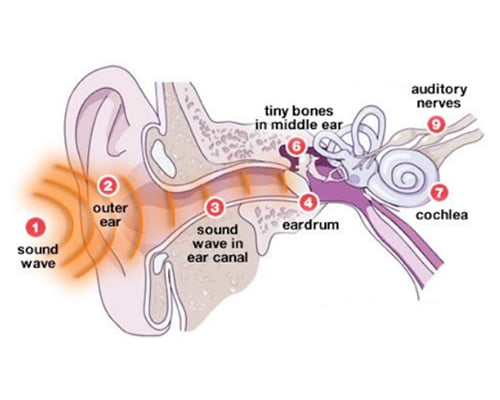HEARING MECHANISM
The hearing mechanism is an amazingly intricate system. Sound is generated by a source that sends out air pressure waves.
These pressure waves reach the eardrum, or tympanic membrane, which vibrates at a rate and magnitude proportional to the nature of the waves.
The tympanic membrane transforms this vibration into mechanical energy in the middle ear, which in turn converts it to hydraulic energy in the fluid of the inner ear.
The hydraulic energy stimulates the sensory cells of the inner ear, which send electrical impulses to the auditory nerve, brainstem, and cortex.
But the passive reception of auditory information is only the beginning.
The listener brings to bear upon these acoustic waves attention to the sound, differentiation of the sound from background noise, and experience with similar sounds.
The listener then puts all of these aspects of audition into the context of the moment to identify the nature of a sound.
That simple sounds can be identified is testimony to the exquisite sensitivity of the auditory system.
Now imagine the intricacy of identifying numerous sounds that have been molded together to create speech.
These sounds of speech are made up of pressure waves that by themselves carry no meaning.
When they are put together in a certain order and processed by a normally functioning auditory system, they take on the characteristics of speech, which is then processed further to reveal the meaning of what has been said.
– Brad A. Stach,1998

